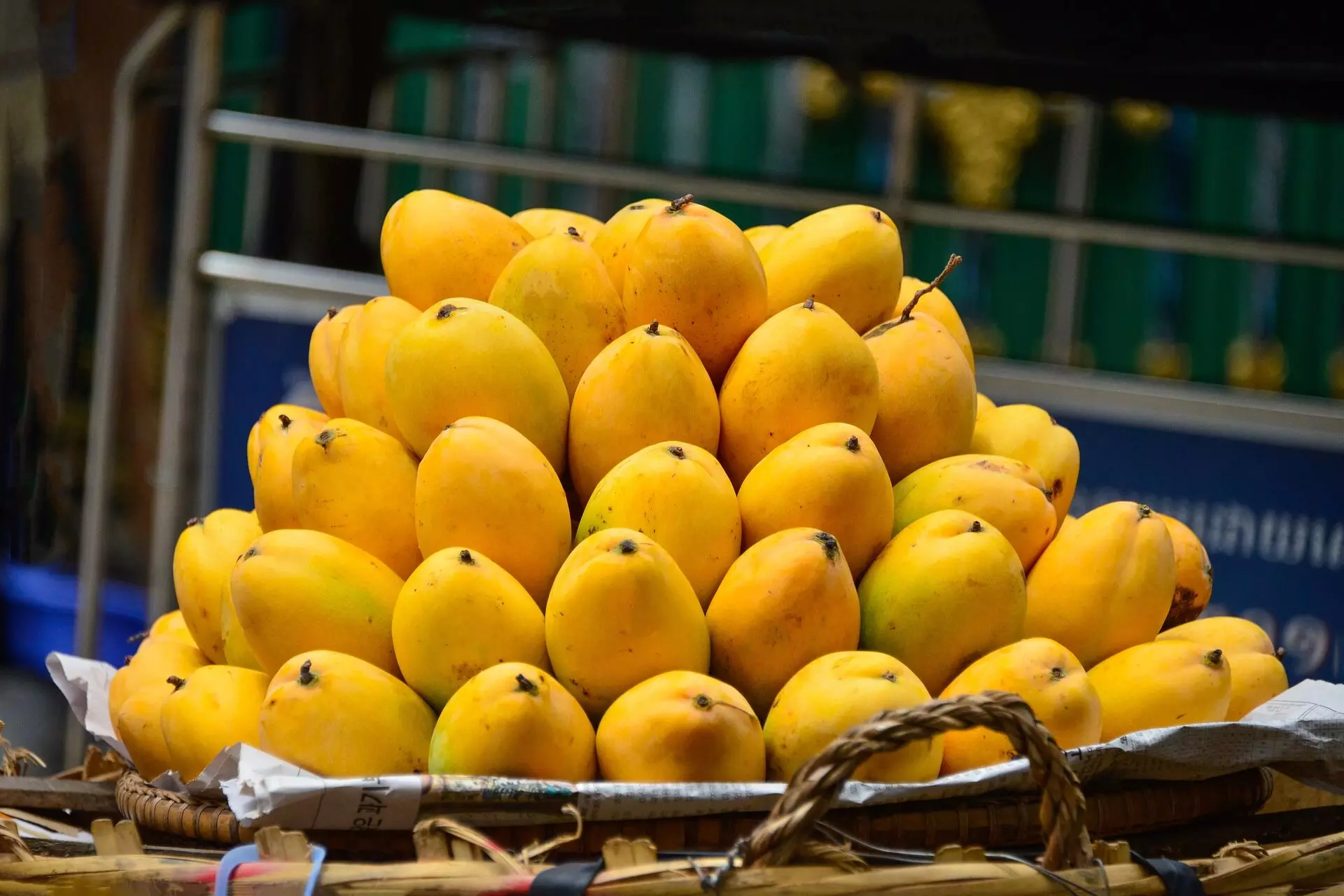Flavour and fragrance of ‘Rataul’
Introduced over a century and a half ago in the culturally rich rural landscape of Baghpat District, Rataul Mangoes are known not just for their fragrance and divine taste but also for being a source of prosperity for the cultivators

Circa 1874: Barden, an engineer engaged to supervise the construction of the Eastern Canal in the Baghpat region of Meerut, brought some plants of the Bambai variety from the Bombay Presidency (as Maharashtra was then known). These were grown by an orchardist, Abdur Razzaq, son of Sheikh Inayat Ali who was deeply invested in the cultivation of mangoes. Other landholders who grew this variety included Sheikh Kareemuddin, Chaudhary Kunwar Hussain and Kallu. Their orchards were called Char Takhta, Deputy Sahib Wala Bagh, Nehar Ke Pul Wala Bagh, and Kallu Wala Bagh, respectively. In their times, mangoes were cultivated using traditional practices i.e., Tukhmi.
The credit for spreading its cultivation and fame goes to the grandson of Abdur Razzaq, Sheikh Mohammad Afaq Faridi, who was so passionate about mangoes that he was able to tell a variety just by chewing the leaves of a mango tree or even by smelling it. The story about Rataul Mango is that when he was passing by a farm, he saw a baby plant of mango and, as per his habit, he crushed and smelled the leaf. It gave the amazing flavour of a carrot, and he decided to graft this variety. This was in 1917. It was a very successful graft, and he extended the acreage under this variety. It soon became the signature mango of his nursery, which he established on May 7, 1928, under the name and style of Shohra-e-Afaq nursery. A person much ahead of his time, he got it registered on November 4, 1935, with 461 varieties of mangoes including, of course, the muse for this column, the Rataul Mango.
In 1935, Nawab of Chhatari, Ahmed Sayeed Khan, showcased Rataul in an exhibition held in London where it (the Rataul variety) received the First prize and a lot of appreciation. Shohra-e-Afaq nursery sent its varieties all over India and, thus, Rataul Mango became the fruit to be reckoned with by connoisseurs and aficionados. The catalogue published by Shohra-e-Afaq nursery in 1941-42 describes it as “the best mango known as yet, very sweet, most extremely delicious, scent extraordinarily sweet, yields in plenty, precious and nice mango, best money maker. Our speciality excellence is confirmed in England”.
Post-independence, some grafts were taken to Pakistan where they were grown, given the name ‘Anwar Ratoul’, and exported to West Asian countries. The name Rataul, the village of the fruit’s origin, was retained, but Pakistan claimed it as a local produce. However, the claim was contested by Rataul Mango Producers’ Association which had been making efforts to get the Geographical Indicator (GI) tag for the mango variety for over a decade; the application was made on April 5, 2010. Finally, the certification process was accelerated by the Central Institute of Subtropical Horticulture (CISH), Lucknow, and the affirmation was given in 2020. Thus, together with the Malihabadi Dussehri mangoes, which were the first variety to get a GI tag, Rataul’s mango would also get a boost.
In the submission made to the GI registry, the Rataul producers also referred to an article — ‘India’s gift to the world: this delicious summer fruit is much more than something good to eat’ — by Mohan Sivanand in the Reader’s Digest, on the mangoes of Rataul village in the Baghpat district. In addition to Rataul, the village from where it derives its name, it is also grown in the neighbouring Shekhpuri, Vinaypur, Mubarikpur, Tigri and Lahchoda of the Tehsil covering approximately 85-hectare land with over 10,000 trees.
Rataul and the surrounding villages are a fine example of a culturally rich rural landscape. Mango orchards, local water bodies, farmlands and open congregation spaces define the major part of the landscape of this region which has evolved over a period of time. The district forms a part of Yamuna-Hindon doab in the Yamuna sub-basin of the Indo-Gangetic plain. It occupies a part of the inter-fluvial belt of Ganga-Yamuna in the extreme western part of the state. Rataul Mangoes are of medium size averaging around 150-200 grams and, therefore, a one-kg gift pack will have five to six of these delicious and mouth-watering mangoes. The Rataul variety of mango grows well in clay, sandy and loam soil with pH values ranging from 5.5-7.5. Higher temperature during the fruit development and maturity phase gives better-quality fruits. However, frequent rainfalls and high humidity are not good for Rataul Mango which is prone to many pests and diseases.
The Rataul Mango tree is medium in size and its trunk is erect. Its crown has a diameter of 10-12 metres on average. Fruit bearing is generally light and biennial. A well-grown tree of ten years of age yields 1.5-4 quintals per season, and the productive life of a tree extends to five decades — ushering prosperity for its owners, and fragrance and taste for all those who are privileged to partake of this truly divine offering.
Post script: Readers may like to note that the name of Baghpat comes from Vyaghrprastha (the abode of lions), which was one of the five villages sought by the Pandavas from the kingdom of Hastinapur (the modern-day Meerut).
The writer superannuated as the Director of the LBSNAA after 36 years in the IAS. He is currently a historian and policy analyst.



